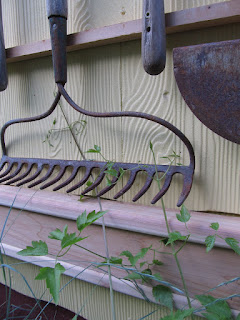Thanks to Liz Lodman from Montana Fish, Wildlife & Parks' Becoming an Outdoors Woman program (BOW) for organizing a great birding workshop and thanks for the invitation to participate. I always look forward to teaching workshops and programs at BOW events. It is great to see so many interested and engaged people of all different backgrounds learning about things that are important to me- whether it is hunting, fishing, or, in this case, birding in Montana. BOW is a great program and Liz does a wonderful job organizing all the events.
Below are links to posts on this blog that cover much of the information I discussed in the workshop:
- Mixed feelings for bird feeders
- Your yard as a feeder
- How to build a suet feeder
- How to make your own suet
- How to Build a Brush Pile
- Homeowners are Essential to Conservation
- Plant a Standing Snag for Wildlife
- Birdhouse basics
- How to clean and fill nest boxes
There are probably a lot more relevant posts, but that seems like plenty to get you started!
Here are a list of plants and other resources to get you going for growing your own backyard bird garden!
Easy to find, easy to grow, recommended native plants:
•Forbs
–White yarrow (Achillea millefolium)
–Horse mint (Monarda fistulosa)
–Hairy golden aster (Heterotheca villosa)
–Blanket flower (Gaillardia aristata)
–Blue flax (Linum lewisii)
–Wilcox’s Penstemon (Penstemon wilcoxii)
–Showy fleabane (Erigeron speciosus)
•Grasses
–Bluebunch wheatgrass (Agropyron spicatum)
–Prairie June grass (Koelaria cristata)
–Idaho fescue (Festuca idahoensis)
–Rough fescue (Festuca scabrella)
•Shrubby Shrubs
–Rubber rabbit brush (Crysothamnus nauseosa)
–Big Basin Sage (Artemesia tridentata)
–Woods Rose (Rosa woodsii)
–Golden current (Ribes aureum)
–Mock orange (Philadelphus lewisii)
•Shrubby Trees
–Red Osier Dogwood (Cornus stolonifera)
–Serviceberry (Amelanchier alnifolia)
–Chokecherry (Prunus virginiana)
–Mountain Ash (Sorbus scopulina)
–Quaking Aspen (Populus tremuloides)
–Elderberry (Sambucus cerulea)
–Black hawthorn (Creataegus douglasii)
Deer Resistant Plants:
•Bluebunch wheatgrass
•White Yarrow
•Blanket flower
•Hairy golden aster
•Monarda (bee balm)
•Penstemons
•Fleabanes
•Asters
•Goldenrod (Solidago spp)
•Showy milkweed (Asclepias speciosa)
Instant Prairie:
•Bluebunch wheatgrass
•Idaho fescue
•Prairie junegrass
•White Yarrow
•Blanket flower
•Hairy golden aster
•Monarda (bee balm)
•Sage/ rabbit brush
•Wilcox’s penstemon
•Showy fleabane
Books to help you get started (some of my favorites!):
•Bringing Nature Home
•The New American Landscape
•Shrink Your Lawn
•The Landscape Revolution: Garden with Mother Nature not Against Her
•Noah’s Garden
•Paradise by Design
•The Forgotten Pollinators
•Landscaping with Jays
•Gardening with a Wild Heart
•The Magic of Montana Native Plants




















